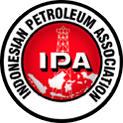Publications
Beyond The Surface: UAV-Based Digital Outcrop Modelling as Subsurface Analog for Clay Smear and Juxtaposition Evaluation of Kebo Formation In Sumberan, Gunungkidul
Proceedings Title : Proc. Indon. Petrol. Assoc., 48th Ann. Conv., 2024
The surge in Digital Outcrop Modelling (DOM) research in recent years stems from its pivotal role in comprehending geological processes and effectively integrating analog lessons into subsurface models. This paper aims to elucidate the utilization of UAV (drones) for acquiring aerial images of geological outcrops, serving as digital analogs in 3D geological modelling of Kebo Formation. Juxtaposition and clay smear evaluation were carried out on the analog model/DOM that was formed. The research location is in Sumberan, Tancep, Ngawen, Gunungkidul. In this paper, the outcrop taken is a north-south oriented volcaniclastic sedimentary rock outcrop. To compile the DOM, 150 aerial photos taken using a drone were used with varying flying heights and shooting angles. To calibrate the coordinates, georeferencing was performed using GCP data acquired using a Garmin GPS. DOM was carried out using the help of Agisoft Metashape Professional software. After creating the DOM, the rock unit, faults, and lithological columns were then delineated based on the DOM. After that, unit thickness and throw size were measured using the measurement tools available on Agisoft Metashape Professional. From the geometric data obtained, juxtaposition and clay smear analysis were then carried out with SGR and SSF parameters as well as juxtaposition analysis using a juxtaposition triangle diagram. Based on modelling, on minimal throw m juxtaposition between sandstone b and d experience sealing. In the other side, on maximal throw sandstones b and d are experiencing leaking. Clay smear analysis shows that the fault A2 tends to be sealed with an SGR value of >20% and an SSF value of <4 while A3 tends to seal with SGR value of about 20% and SSf >4. The results of the SGR-SSF and juxtaposition analysis can change as the change of shale thickness involved in the model as well as throw values. This may happen when the data quantities and qualities increase so that the areas that recorded by DOM increases. DOM also can be integrated one with the other so that it can be used to evaluate the 3D correlation of one outcrop with another.
Log In as an IPA Member to Download Publication for Free.
